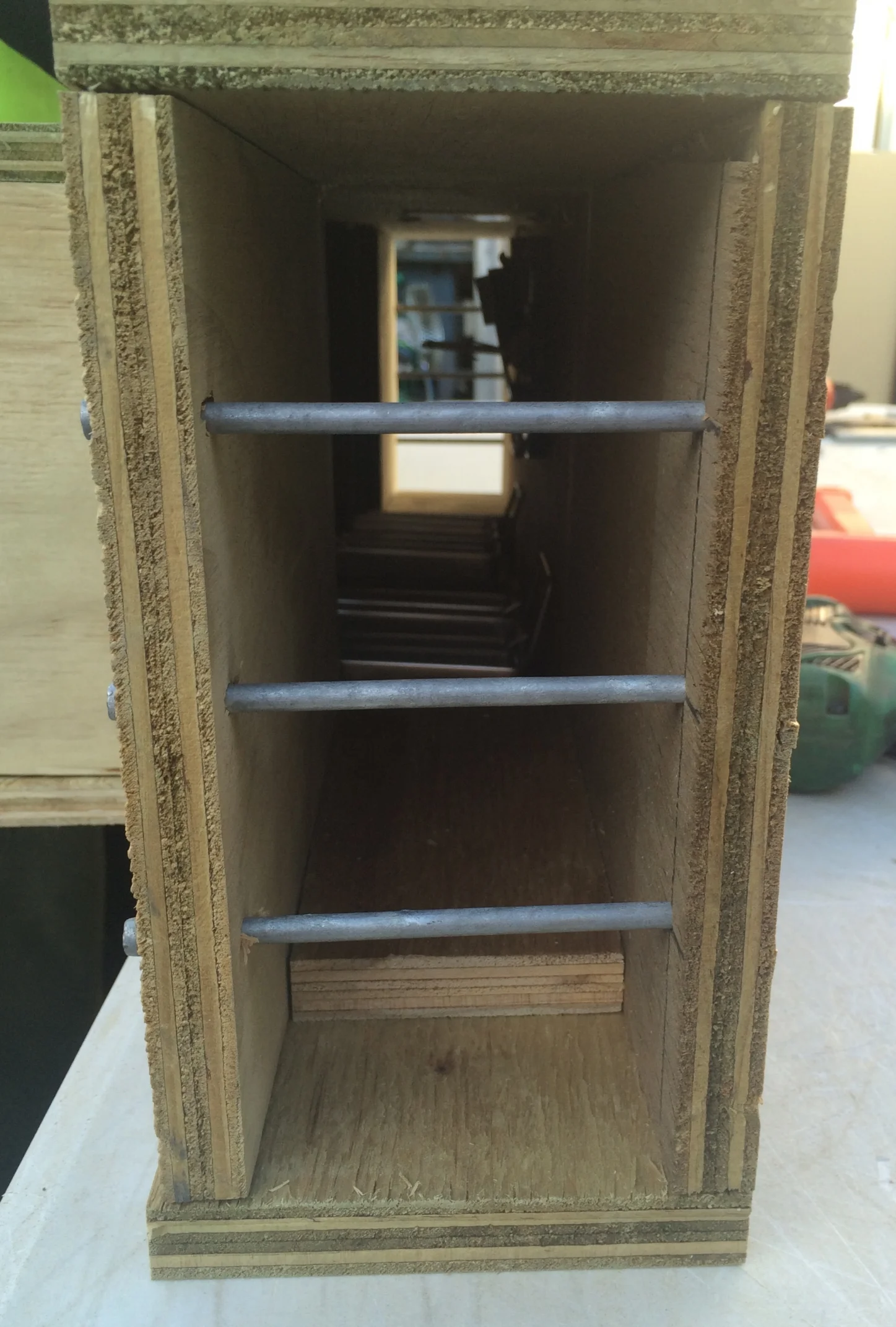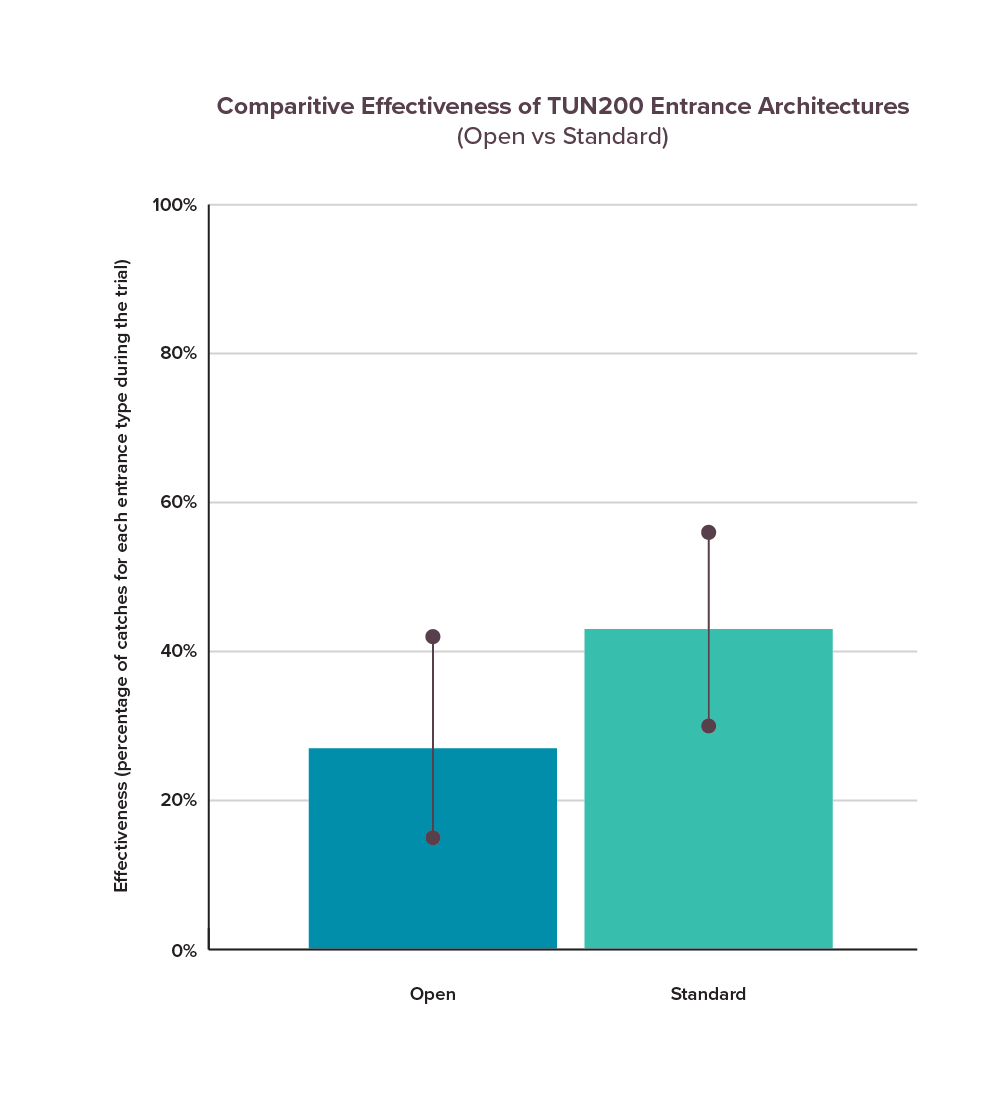ZIP is always looking for ways to improve the effectiveness of the tools we use in the virtual barrier. With this in mind, a trial was run to determine whether a TUN200 trap box with a more ‘open’ entrance architecture might kill significantly more rats than a TUN200 with a standard 7.2 cm diameter entrance hole.
ZIP's TUN200, a trap box containing double-set DOC200 traps for rats and stoats, in a 'run-through tunnel' configuration
We hypothesised that the ‘open’ architecture trap box would likely be a less threatening prospect for rats to investigate, as this design enables a clearer line of sight through the tunnel and out the other side. This expectation stemmed from our own observations, along with the results of a trial conducted as part of the Poutiri Ao ō Tāne project, which indicated that a tunnel architecture may be approximately 20% more attractive to rats than a standard ‘single-entry’ trap box with a closed end.
Our trial was run at Bottle Rock peninsula between September and November 2016, and 4 barrier checks were carried out during this period. It should be noted that the experiment was run concurrently with another trial, designed to ascertain whether placing TUN200s at 5 m (as opposed to 10 m) intervals in the barrier would greatly increase catch rates (more on this later...)
TUN200 boxes with ‘open’ architecture entrances (above) were fitted with three horizontal metal bars at each tunnel end, 5 cm apart, creating a 5 cm x 8.5 cm grid and a clear line of sight through the tunnel.
TUN200 boxes with the standard entrance architecture (above) included a wooden facing on the tunnel ends, with a 7.2cm diameter hole for the entrance.
Both designs were tested for non–target (e.g. weka) exclusion and safety before deployment in the barrier. Each design was alternated at 5 m intervals along the first line of the virtual barrier. All traps were lured using Nutella (chocolate hazelnut paste). Routine servicing checks were completed every three weeks, and catches in each entrance type recorded.
We were surprised to find some indication that the more open-ended TUN200 boxes were less attractive to rats than the standard TUN200 boxes, as shown in the graph below:
The data collected showed a reasonable difference in the effectiveness of the entrance designs. The ‘open’ design caught 27% of rats that encountered the barrier line during the trial period, while the standard design caught 43% (with the remaining 30% caught on subsequent lines in the barrier - not included in this trial).
Note, however, the overlapping confidence intervals. The p-value for a difference between the two effectiveness values is 0.11, but the p-value for the open architecture being even 3% better than the standard design is 0.02.
This is sufficient for us to conclude that the open architecture design is unlikely to be significantly more effective (and may in fact be less effective) than the standard TUN200 architecture. We will instead look into other ways we can increase the effectiveness of the TUN200 trap.





